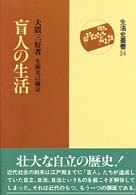- ホーム
- > 洋書
- > 英文書
- > Philosophy
Full Description
Gaston Fessard, S.J. (1897-1978), was a major mid-twentieth century French intellectual. He was a Hegel expert, but also wrote on issues of the day ranging from the Vichy regime to Christian-Marxist dialogue. The product of several decades of reflection, Fessard's work on the Dialectic of the Spiritual Exercises of St. Ignatius of Loyola is the only one of its kind, a careful and penetrating study into the structure and tension of life-changing choices that Ignatius had in mind in his four week spiritual exercises. The Exercises insist on the way of making a spiritual Election, or choice in keeping with God's will for oneself and for the Christian community at a particular moment in one's existence.
Contents
Thoughts on the Dialectic of the Spiritual Exercises
Oliva Blanchette and James Colbert
List of Figures
Preface
Postscript
Introduction
1 Division of the Exercises
1 How to Make the Four Weeks Coincide with the Three Ways?
2 Deduction of the Divisions of the Exercises
part 1: Before the Act of Freedom
2 Positing Non-being: Week One
3 Negation of the Positing of Non-being: Week Two
1 The Three Degrees of Humility
Part 2: Passage from the Before to the After
Introduction to Part 2
4 The Election
1 Preamble to the Election
2 Introduction concerning the Things about Which Election Must Be Made
3 The Three Times of the Election
4 Two Ways of Making Election in the Third Time (Numbers 178-188)
5 For the Amendment and Reform of One's Own Life and Condition (Number 189)
Part 3: After the Act of Freedom
Introduction to Part 3
5 Exclusion of All Non-being: Third Week
1 The Growth of the Exclusion of Non-being
2 Passage from the Third to the Fourth Moment: Triduum Mortis
3 Application to the Act of Freedom
6 Positing of Being: Fourth Week
1 Application to the Act of Freedom
2 Growth of the Positing of the Being
3 The Disappearance of the Positing of Being: Ascension
Conclusion: The Contemplatio Ad Amorem Obtinendum
1 First Point
2 Second Point
3 Third Point
4 Fourth Point
5 Suscipe
Circularity of the Exercises and Circularity of Absolute Knowledge: From Ignatius to Hegel through Hölderlin
Afterword
1 Essay on Constructing a Geometrical Scheme of the Exercises
2 Division of the Exercises
3 Perspectives
Appendix: Rules for the Discernment of Spirits
1 Rules for the First Week (Numbers 313-327)
2 Rules for the Second Week (Numbers 328-336)
Further Study of the Ignatian Maxim
Haec sit prima agendorum regula: sic Deo fide, quasi rerum successus omnis a te, nihil a Deo ponderet; ita tamen iis omnem operam admove, quasi tu nihil, Deus omnia solus sit facturus
Section 1: Sources of the Traditional Maxim
Section 2: Structure of Maxim Number 2
Section 3: The Objections against the Traditional Maxim
Section 4: The Secret of These Objections
Figures
Figures 1-10
Figures 14-19
Figures 20-29
Elogium Sepulcrale
Index








